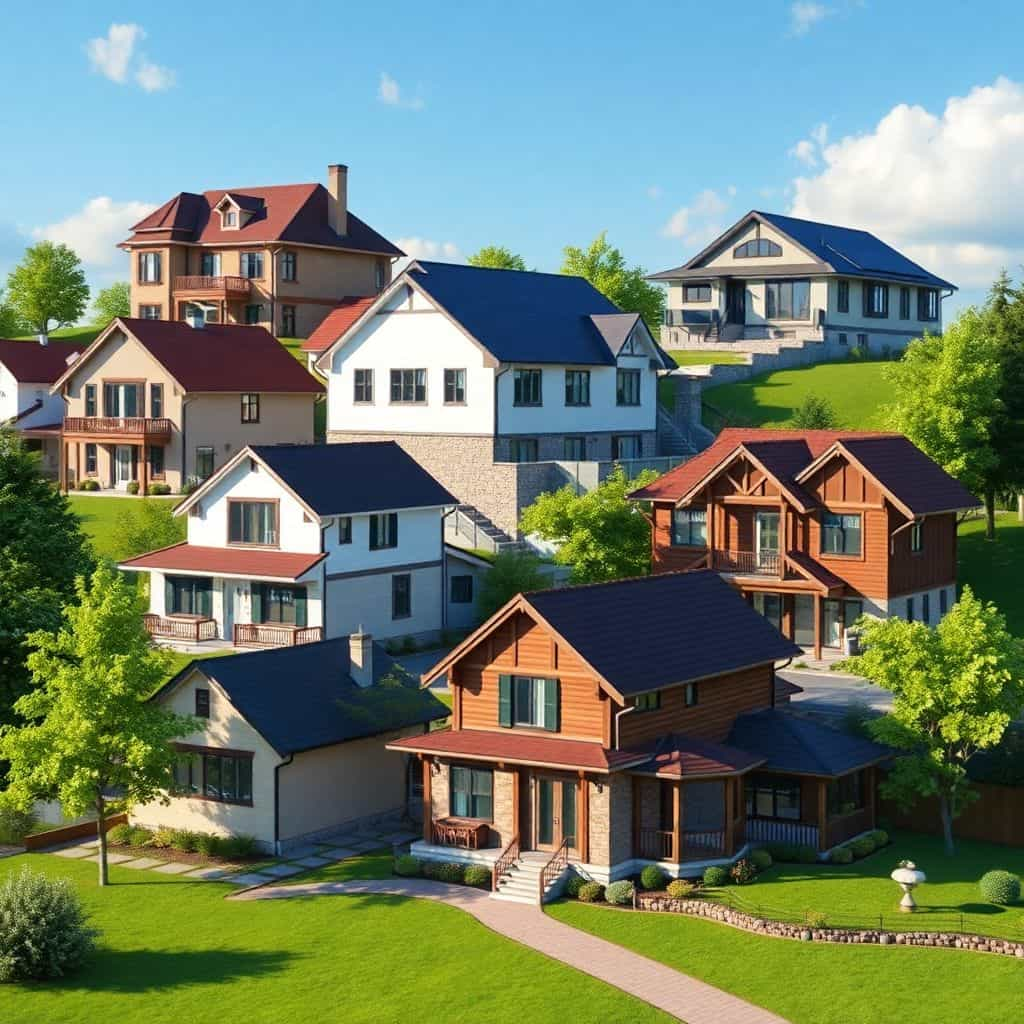As people seek more space and privacy, the allure of purchasing a detached home has never been stronger. A detached home offers the unique advantage of occupying an entire structure without shared walls—a feature that translates into unparalleled privacy and independence. However, purchasing such a property involves several intricacies that potential buyers should be well aware of.
First and foremost, let’s discuss the varied options available. Detached homes come in various forms, from quaint cottages to lavish villas, outdoor space being a common point of interest. According to real estate expert Jane Robbins, the trend towards acquiring more land—where possible—has been particularly noticeable post-pandemic as individuals prioritize personal space. Some buyers are drawn to new builds due to their contemporary design and energy efficiency, while others may find the charm and sturdiness of older properties more appealing.
One of the significant advantages of owning a detached home is the control it offers over renovations and modifications. Unlike in condos or townhouses, homeowners can frequently alter their property as they see fit, given they comply with local regulations. Furthermore, detached homes often provide larger outdoor areas, offering opportunities for gardening, recreational activities, or building extensions, making them a favorite for families and pet owners.
Despite these benefits, buying a detached home can present challenges, mostly related to costs. Detached homes are generally more expensive than attached homes due to the land upon which they sit and the absence of shared structural components. This brings us to the financial implications. According to the U.S. Census Bureau, the median sales price of a single-family home in the United States was around $336,600 as of early 2023, reflecting an increase driven by high demand and limited inventory.
For prospective buyers, it’s crucial to consider additional costs involved in owning a detached home. Maintenance costs can be significantly higher compared to townhouses or apartments, as owners must budget for roof repairs, exterior painting, and landscaping. Additionally, property taxes may be higher, depending on the location and appraised value of the land.
To aid in determining the best value for money, it’s helpful to compare different proposals. New developments may offer competitive pricing on detached homes, often packaged with modern amenities, while more established areas might provide properties with mature landscapes and well-developed infrastructure. It’s key to understand the total cost of ownership, including maintenance, taxes, and potential homeowner association fees.
When comparing options, location remains a critical factor. Proximity to schools, healthcare centers, workplaces, and entertainment hubs can greatly influence property value and future resale potential. More affordable detached homes are often located further away from urban centers, necessitating a careful consideration of commuting time and transportation costs. In this respect, some buyers opt for suburban or rural areas, where properties tend to be more affordable but offer less immediate access to city amenities.
Potential homeowners should also consider market conditions. Real estate markets can fluctuate, influenced by interest rates, economic conditions, and demographic shifts. A buyer’s market, where homes are abundant and demand is lower, might present a better opportunity for negotiations. Expert economist Mark Zell estimates that understanding the cyclical nature of real estate markets can equip buyers to better predict when to purchase.
Lastly, one must scrutinize financing options and mortgage conditions. Traditionally, a 20% deposit of the home’s purchase price is recommended to avoid private mortgage insurance, although many lenders now offer flexibility in terms of down payment requirements. Fixed-rate and adjustable-rate mortgages have their pros and cons, related to the stability of interest rates and long-term financial planning.
In conclusion, purchasing a detached home involves a variety of factors including cost, location, and personal preferences. By thoroughly researching and weighing these elements, buyers can secure a property that not only fits their budget but also meets their lifestyle aspirations. Being aware of these intricacies ensures that one can navigate the real estate market confidently, ultimately achieving the goal of homeownership.
You may also like
Suburban Real Estate Market: Guide to Buying an Independent House
Purchasing an independent house in the suburbs comes with its unique set of opportunities and challenges. This article explores the various proposals, costs, and advantages of suburban living, delving into the complexities of the market and offering insights on the most cost-effective options.
Guide to Buy an Apartment in the City Center
Purchasing an apartment in the city center is a complex process filled with opportunities and challenges. This article explores various proposals and costs, and provides a detailed comparison of the most attractive options available in today’s real estate market.
Bathtubs: Innovations and Unbeatable Offers in the Market
Bathtubs have undergone remarkable transformations over the years, evolving from simple utilitarian essentials to luxurious centerpieces in modern bathrooms. This article delves into the latest bathtub models, features, and innovations, from shower-bathtub combos to vintage clawfoot designs, highlighting market trends, geographical buying patterns, and value-for-money options.
Showers: Technological advancements and Best Buys
Delving into the latest innovations in shower designs, this article examines new models, market trends, and top recommendations for the best quality-price balance. We also explore regional purchasing trends, technological advancements, and provide insight into making informed and satisfactory purchases.
